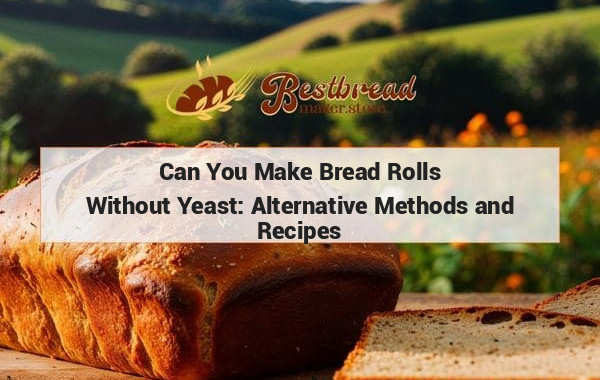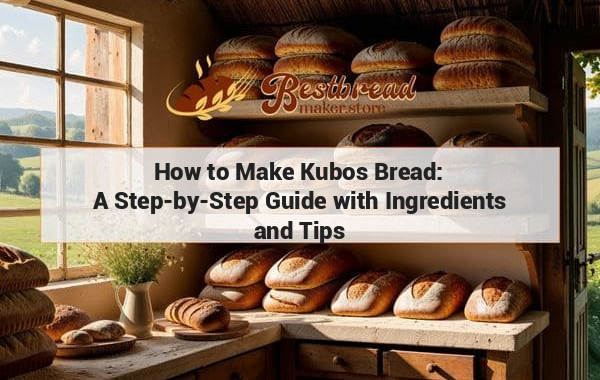Making sourdough in a bread maker: a step-by-step guide with tips and tricks
Yes, you can make sourdough in a bread maker. While traditional sourdough is typically made by hand, using a bread maker can still produce delicious results with less effort. Simply mix the ingredients, let the dough rise, then shape and bake according to your bread maker's instructions. Enjoy the convenience of making sourdough in a bread maker without sacrificing taste!
Can I make sourdough in a bread maker? Yes, you can! Using a bread maker makes the sourdough process easier and more accessible, even for beginners. Here’s how you can get started and what you need to know about making sourdough in a bread maker.
Key Takeaways Sourdough bread can be made in most bread makers. You'll need to adjust the recipe slightly to account for the unique characteristics of sourdough, like longer rising times. Follow your bread maker's manual for sourdough settings, or opt for the manual cycle for more control.
Can You Make Sourdough in a Bread Maker?
Yes, it’s possible to make sourdough in a bread maker, but it’s not as straightforward as making other types of bread. Sourdough is a unique type of bread that requires a natural starter rather than commercial yeast. This starter needs time to ferment, which gives sourdough its distinct tangy flavor and chewy texture.
While bread makers are excellent for many types of bread, sourdough requires some adjustments to the typical bread machine process due to its specific needs. However, many modern bread makers come with a sourdough setting, making the process easier for those who want to try their hand at this type of bread. The best bread machines allow you to control the kneading, rising, and baking times manually, which is essential for sourdough.
Why Is Sourdough Different?
Sourdough differs from other bread primarily due to its leavening process. Traditional bread relies on commercial yeast to rise quickly, while sourdough uses a fermented mixture of flour and water, known as a starter. This natural fermentation creates the signature tangy taste and a texture that can be crusty on the outside and soft and airy inside.
How Does a Bread Maker Work with Sourdough?
Bread makers simplify the baking process by handling the kneading, rising, and baking in one machine. However, because sourdough requires a longer fermentation time, most bread makers will need to be manually adjusted. Here’s how to adjust for sourdough:
Manual Cycle for Sourdough
Using the manual cycle on your bread maker is one of the best options for making sourdough. This gives you control over each stage of the process. You can allow the dough to rise as long as needed and then start the baking cycle at the appropriate time. Many sourdough bakers prefer this method because it replicates the traditional sourdough process more closely than relying on preset cycles.
Using Sourdough Settings
Some bread makers have a dedicated sourdough setting. These machines are designed to handle the longer proofing times that sourdough requires. This option is ideal if you don’t want to manually intervene, but it’s essential to follow your bread maker’s instructions closely to get the best results.
How to Make Sourdough in a Bread Maker
Here’s a simple guide to making sourdough in your bread maker:
Create the Starter: Before you can make sourdough bread, you need an active starter. Combine equal parts water and flour in a jar, and let it sit at room temperature for several days, feeding it daily with fresh flour and water until it’s bubbly and active.
Prepare the Ingredients: Once your starter is ready, you’ll need flour, water, salt, and your starter for the dough. The ratios may vary depending on your specific recipe, but typically, you’ll use a mix of strong bread flour and water along with a few tablespoons of the sourdough starter.
Load the Bread Maker: Add the ingredients to your bread maker in the order recommended by the manufacturer. Usually, liquids go in first, followed by the flour, salt, and starter. Some recipes may also call for a small amount of sugar or oil, but these ingredients aren’t necessary for traditional sourdough.
Select the Cycle: Choose the manual or sourdough cycle. If your bread maker doesn’t have a sourdough setting, use the manual mode to control the kneading and rising process. You may need to let the dough rise for 4 to 6 hours, depending on the ambient temperature and the strength of your starter.
Monitor the Process: Sourdough bread is more temperamental than other breads, so keep an eye on the dough as it rises. If it’s rising too quickly or slowly, you may need to adjust the timing manually.
Bake: Once the dough has risen to the right level, start the baking cycle. Most sourdough loaves will take around 30 to 40 minutes to bake, depending on your bread maker and the size of the loaf.
Cool and Enjoy: After baking, let the bread cool completely on a wire rack before slicing. This helps the texture firm up and ensures you get the perfect sourdough bite.
Benefits of Making Sourdough in a Bread Maker
Making sourdough in a bread maker has several advantages:
- Convenience: Bread makers automate most of the work, saving you time and effort.
- Control: You can manually control the process, ensuring the dough gets enough time to rise and develop its flavors.
- Consistency: Once you find the right settings, a bread maker can produce consistent results every time.
Best Bread Makers for Sourdough
If you’re looking to invest in a bread maker specifically for sourdough, consider models that offer a manual mode or a dedicated sourdough setting. Some of the top-rated bread makers, like those featured on bestbreadmaker.store, come with these features and make the sourdough process simpler and more reliable.
Common Issues with Sourdough in a Bread Maker
Despite the benefits, there are a few challenges to making sourdough in a bread maker:
Long Rising Time: Sourdough requires a long fermentation process, which isn’t ideal for bread makers that follow a fixed cycle. Using the manual setting helps, but you need to monitor the dough closely.
Starter Activity: The success of your sourdough bread largely depends on the strength of your starter. If your starter isn’t active enough, the dough may not rise properly, resulting in a dense loaf.
Texture Differences: Bread makers can sometimes produce a loaf with a different texture than oven-baked sourdough. If you’re looking for that crusty, artisan-style bread, you may prefer to bake the dough in a conventional oven after the bread maker kneads it.
Frequently Asked Questions
Can I make sourdough without a sourdough setting?
Yes, you can. Use the manual mode to control the rise and bake times manually.
How do I know if my sourdough starter is ready?
Your starter is ready when it’s bubbly and has doubled in size after feeding. It should have a tangy smell.
What type of flour should I use for sourdough?
Strong bread flour works best for sourdough as it provides the necessary gluten structure. Whole wheat flour can also be used for a denser, more flavorful loaf.
Can I make gluten-free sourdough in a bread maker?
Yes, but it requires a gluten-free starter and specific gluten-free flours. The process is similar, but the texture will be different.
Do all bread makers work for sourdough?
Not all bread makers are ideal for sourdough. Look for models with a manual or sourdough setting for the best results.
By following these tips, you can make delicious sourdough bread in your bread maker, saving time while enjoying the unique flavors of this traditional bread. And if you’re looking for the best bread maker to get started, check out the models recommended on bestbreadmaker.store for reliable and easy-to-use options.








